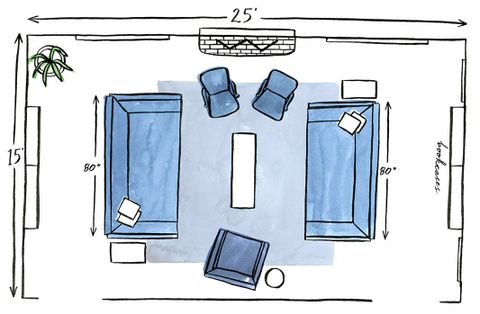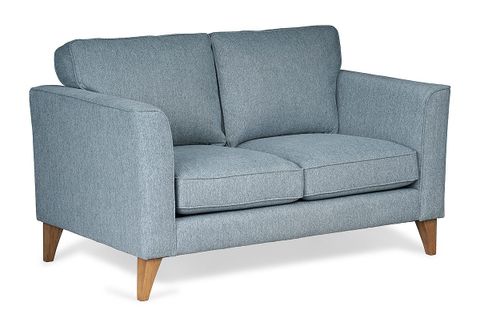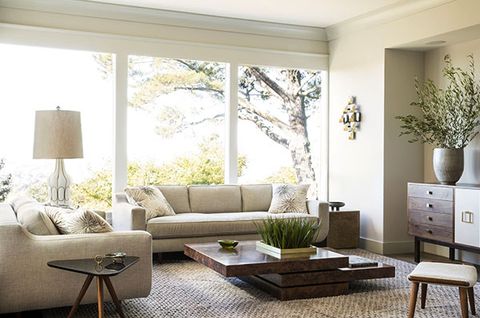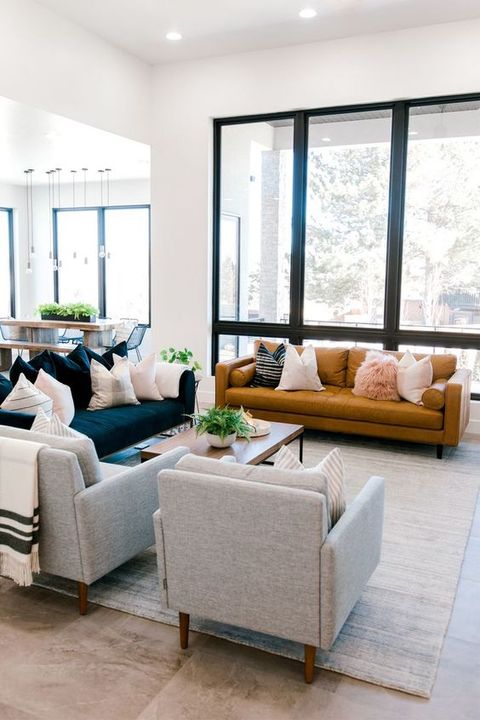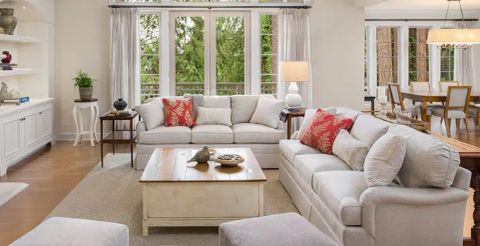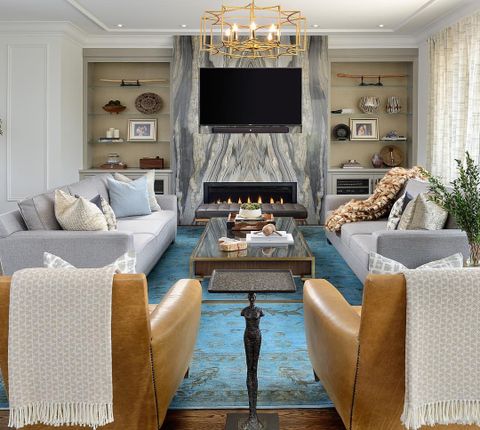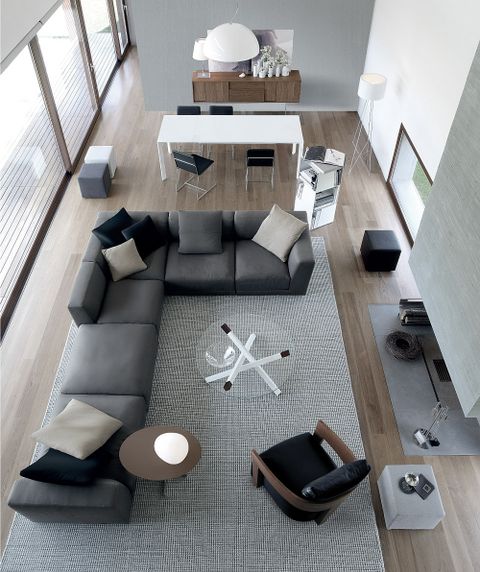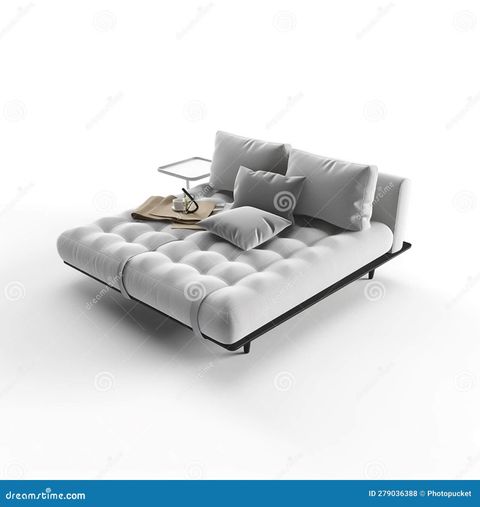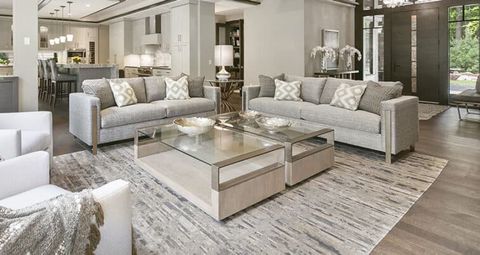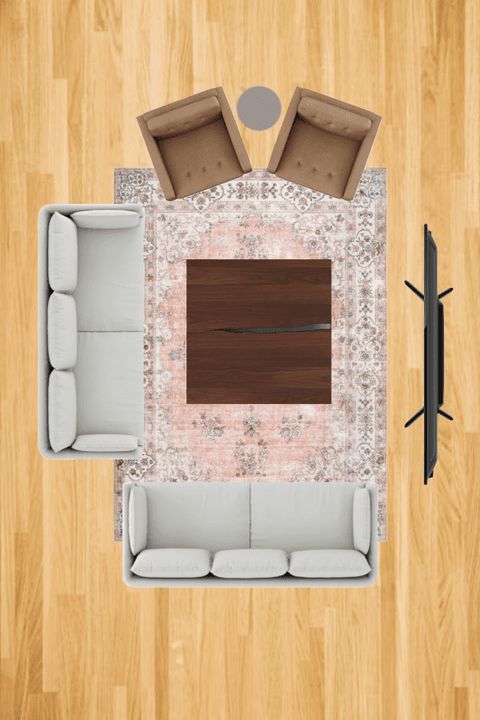Having two sofas in your living room isn’t just about having more seating; it’s an opportunity to truly elevate your space. Whether you’re aiming for a conversation-centric layout, a more formal feel, or simply maximizing comfort, the strategic placement and styling of two sofas can transform your room. Let’s dive into how you can make this arrangement work beautifully for you.
So, you’ve got two sofas, or you’re thinking about getting them. Great choice. A living room with two sofas can feel incredibly grand and welcoming, offering ample seating for family gatherings, movie nights, or just lounging around. But sometimes, facing two substantial pieces of furniture can feel a bit daunting. How do you arrange them so they don’t look like they’re at war? How do you tie everything together so it feels cohesive and stylish? Don’t fret. It’s all about understanding a few key principles and having some fun with it. We’ll walk through some straightforward, practical advice to help you craft a living space that’s both functional and fabulous.
The Art of Arrangement: Finding the Perfect Balance
The most crucial step is placement. Think about how you want the room to flow and what the focal point will be. Often, a fireplace, a large window with a view, or a television serves as the natural anchor.
- Facing Each Other: This is a classic for a reason. Placing two sofas opposite each other creates a natural conversational grouping. It’s ideal for encouraging interaction and can make a room feel very balanced and symmetrical. You’ll want to leave enough space between them for a coffee table, usually about 14-18 inches. This setup can make a larger room feel more intimate.
- L-Shape Formation: Position the two sofas to form an ‘L’. This is fantastic for defining a zone within a larger open-plan space or for creating a cozy corner. One sofa can be against a wall, and the other can extend into the room, perpendicular to it. This arrangement still promotes conversation but also directs the eye around the room.
- Parallel Placement: If you have a long, rectangular room, placing the sofas parallel to each other, facing inwards, can create a sense of grandeur and symmetry. This often works well with a central rug and a walkway behind one or both sofas. It can feel a bit more formal, but it’s super effective for maximizing seating.
Remember to consider traffic flow. Ensure there’s enough room to walk comfortably around the furniture without feeling cramped. Measure your space carefully before deciding on an arrangement.
Choosing Complementary Sofas: Harmony is Key
You don’t necessarily need identical sofas, but they should complement each other. Think about style, scale, and color.
- Matching Set: The easiest route is a matching set. This guarantees a cohesive look and is perfect if you prefer a very structured and traditional aesthetic.
- Similar Style, Different Colors: Opt for two sofas in the same style (e.g., both mid-century modern or both contemporary) but in different, complementary colors. For instance, a navy blue sofa and a cream sofa can look stunning together.
- Similar Color, Different Styles: You could also go with sofas in similar colors but with slightly different silhouettes. A clean-lined, modern sofa paired with a slightly more traditional one in the same neutral tone can add visual interest without clashing.
- Scale Matters: Pay attention to the size of the sofas. If one is significantly larger or bulkier than the other, it can throw off the balance. Try to keep them relatively similar in scale, or if one is larger, place it against a wall where it serves as a more dominant piece.
Consider the overall mood you want to create. Do you want something sleek and modern, or cozy and traditional? Your sofa choices will set the tone.
The Central Element: Rugs and Coffee Tables
These pieces are vital for tying your two-sofa arrangement together. They act as the anchor, grounding the seating area.
- Rug Placement: Your rug should be large enough to sit under the front legs of both sofas, especially if they are facing each other or in an L-shape. This visually connects the pieces and defines the seating zone. A rug that’s too small can make the whole arrangement look disjointed. Aim for a rug that extends at least a foot beyond the seating on each side.
- Coffee Table Choices: A coffee table placed between two facing sofas is a must for practicality and style. You could opt for one large coffee table that bridges the gap, or two smaller ones that flank the center. Consider the height of your sofas; the coffee table should ideally be about the same height or slightly lower. Round or oval tables can soften the lines of two sofas and make navigating the space easier, especially in tighter arrangements.
Accessorizing for Cohesion and Comfort
Now for the fun part – making the space truly yours! Accessories are key to bringing your two-sofa setup to life and ensuring it feels like a unified space.
- Throw Pillows and Blankets: Use pillows and throws to add pops of color, texture, and pattern. You can coordinate them across both sofas, perhaps using a common color or theme. For example, if one sofa is blue and the other is grey, you might use pillows with both blue and grey accents.
- Lighting: Layer your lighting. Place floor lamps and table lamps strategically to create ambiance and ensure good visibility. A lamp on an end table next to each sofa is practical and adds to the visual appeal.
- Wall Decor: Hang artwork or mirrors that span the space between the two sofas or above them if they are against a wall. This helps to create a sense of balance and draws the eye upwards.
- Side Tables: These are essential for holding drinks, lamps, or decorative items. Place them at the ends of the sofas or in the corners where they meet to offer convenience and complete the look.
Creating a Focal Point
With two sofas, you have the opportunity to create a really strong focal point, or even two complementary ones.
- Fireplace: If you have a fireplace, positioning the sofas to face it or at an angle towards it is a natural choice for a cozy gathering spot.
- Television: For many, the TV is the main draw. Arrange the sofas so they offer comfortable viewing angles for everyone. Ensure the distance is appropriate for the TV size.
- Art or View: A striking piece of art or a beautiful window view can also serve as the room’s centerpiece. Arrange your seating to take advantage of these elements.
Think about what you want people to look at when they enter the room. Your sofa arrangement should guide the eye towards this focal point.
Beyond the Basics: Adding Personality
Once you have the core elements in place, don’t be afraid to inject your own style.
- Plants: Greenery brings life and color into any room. Place potted plants on side tables, in corners, or even on larger coffee tables.
- Books and Decor: Stack books on coffee tables or side tables, and display decorative objects that reflect your interests and personality. This makes the space feel lived-in and authentic.
- Balance and Symmetry (or Asymmetry): While symmetry can be pleasing, don’t feel tied to it. Sometimes a slightly asymmetrical arrangement, balanced with decor, can feel more dynamic and interesting. For example, one sofa might have a floor lamp and a tall plant, while the other has a cluster of smaller lamps and decorative objects.
The goal is to create a space that feels comfortable, inviting, and uniquely yours. Experiment with different arrangements and decorative elements until it feels just right.
Styling a living room with two sofas offers a fantastic canvas for creating a functional and aesthetically pleasing space. By thoughtfully considering your arrangement, choosing complementary pieces, anchoring the area with rugs and tables, and layering in personal touches with accessories and decor, you can craft a room that’s perfect for both everyday living and entertaining. Don’t be afraid to play around and see what works best for your home and your lifestyle. The most important thing is that your living room feels like a welcoming sanctuary for you and your guests. Enjoy the process of making it your own.

